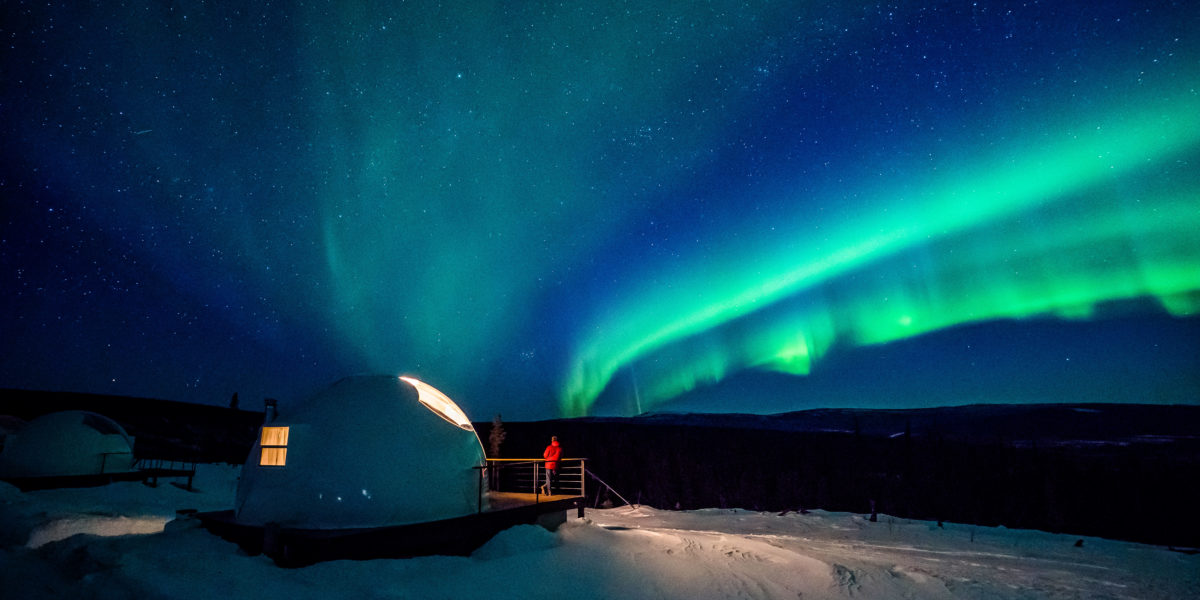
Here’s How to See the Northern Lights Tonight and Tomorrow (If You’re Lucky)
View the Northern Lights while they last by following this guidance from experts.

The luminous glow seen around the magnetic poles of the northern and southern hemispheres known as the aurora borealis is a bucket list event for travelers. The Northern Lights—caused by collisions between electrically charged particles streaming out from the sun in the solar wind that enter Earth’s atmosphere colliding with molecules and atoms of oxygen and nitrogen—is a sight to behold. Both today and tomorrow, there might be a chance to view them in some states in the West.
Earlier this week, the University of Alaska Fairbanks predicted via the Planetary K-Index that the aurora borealis could be seen across parts of Washington, Idaho, Wyoming, Montana, North Dakota, and South Dakota in the West. In other parts of the country, they predicted that New Hampshire, Minnesota, Nebraska, Massachusetts, Maryland, Ohio, Wisconsin, Michigan, New York, Vermont, and Maine may also experience the phenomena.
Though the University did give us hope, the Washington Post spoke with Bill Murtagh, the program coordinator at the National Oceanic and Atmospheric Administration (NOAA) Space Weather Prediction Center, who said it may be unlikely in many of the areas originally stated. “The chances this week [of seeing the northern lights] are slim at latitudes such as Maryland,” said Murtagh. “In northern-tier states, you might see a glow on the horizon.”
He did say, however, that on Wednesday, the storm will be highly visible low on the horizon from Seattle, and on Thursday, the storm will get stronger and can be seen overhead in Boise, Idaho and Cheyenne, Wyoming.
Don’t live in an area where you might be able to see the Northern Lights? Don’t fret. You can watch the University’s live cam of the aurora here.
